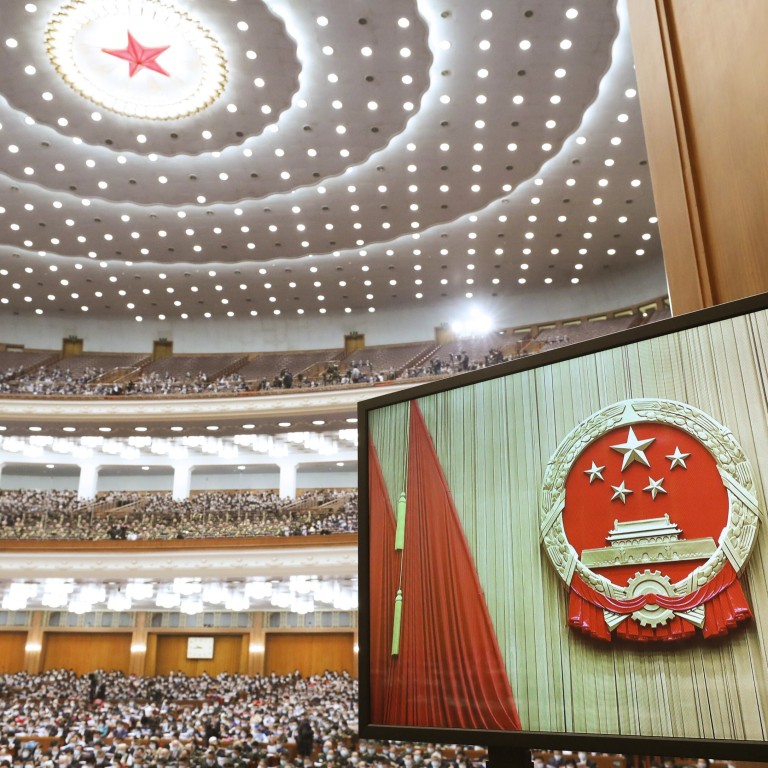
Stock traders look to China’s ‘two sessions’ for drivers as political meeting begins under cloud of ‘bubble’ warning
- The Hang Seng Index has weakened on the run-up to and during the past four ‘two sessions’ meetings, and this week has been choppy at best
- China cannot afford a sudden tightening of monetary policy, because the private sector has not fully recovered yet, according to China Renaissance
This year marks the beginning of China’s 14th five-year plan and the centenary milestone in the founding of the Communist Party.
Here is what some analysts are saying about the meetings and the expectations for markets.
Zhu Chaoping, global market strategist at JPMorgan Asset Management:
“The 2021 growth target is set as “above 6% year-over-year”, far below the consensus forecast of a 8.9% year-over-year real GDP growth in 2021, reflecting the shifting focus from quantity to quality of economic growth,’” Zhu said in a report to clients on Friday.
The government work report “reiterates a prudential monetary policy with flexibility, while the money and credit supply is set to be in line with nominal GDP growth,” the money manager said. “Meanwhile, the fiscal budget deficit is set as 3.2% of GDP, lower than that of 2020. These suggest policymakers may opt for a gradual policy normalisation during this year.”
As the global economic recovery stays on track, JPMAM remains constructive on China’s growth prospects. Against the backdrop of policy normalisation, volatilities in the stock market might remain in the near term. As a result, investors need to be selective and focus on fundamentals when seeking opportunities in the Chinese stock market, Zhu added.
The 14th Five-Year Plan might further facilitate the transition to a high-quality growth economy and introduce a variety of investment themes such as consumption, technologies, carbon neutrality and renewable energy, and digital infrastructures, the strategist said.
“The short-term correction in valuation might imply attractive entry point for long-term investment in these sectors.”
Bruce Pang, head of macro and strategy research at China Renaissance Securities in Hong Kong:
China’s GDP target of “above 6 per cent” for 2020 leaves room for structural reform and provides anchor for other numerical targets such as in money supply, inflation and carbon emissions, he said in a report after Premier Li Keqiang work report.
China still cannot afford to take an immediate and substantial tightening. Despite a strong rebound in headline GDP growth, the private sector has not seen a full recovery yet. They are likely to shun any sharp policy turn, he added.
“Some of the emergency fiscal stimulus measures may be phased out. But on the monetary side, a slow tapering is expected, given the need to prevent risk and stabilise the macro leverage ratio.”
China Renaissance expects the focus to be on policy normalisation, with policy support and reform push that should spur the economy through technology innovation, localisation, digitalisation, urbanisation and green initiatives.
“History shows that offshore-listed Chinese equities tend to react positively to the two sessions, but only moderately so. A greater impact may filter through over the next month.”
Deng Lijun, analyst at Northeast Securities in Shanghai:
“The market tends to have corrections or consolidation during the two sessions. When the conferences are over, the fundamental factors will become the driving force, with the release of the first-quarter economic data and the quarterly results,” he said by phone on Thursday.
Carbon neutrality, technology innovation, system reforms and military may be among the major investment themes linked to the events, Deng added.
BCA Research:
A recent statement from top Chinese banking regulator Guo Shuqing highlighting the risk of bubbles in both foreign equity markets and domestic property markets cast a shadow over Asian equities earlier this week, the firm said in a report on Thursday.
“The comments are especially relevant as they come ahead of the National People’s Congress, which will provide some indication of Beijing’s policy direction and priorities this year,” it said. “[His] statement indicates that Chinese policymakers view asset bubbles, not deflationary pressures, as the primary risk to the Chinese economy, therefore implying that policy tightening will continue.”
The base case remains that Chinese policy will tighten and activity will peak in the first half of the year with credit growth decelerating by two to three percentage points this year, BCA Research analysts noted.
“But even though the Chinese policy tailwind to global growth will die down, the global recovery will remain intact, supported by the normalisation of activity as the pandemic recedes in major economies. Thus, we favour European equities over Chinese ones on a 12-month horizon.”

